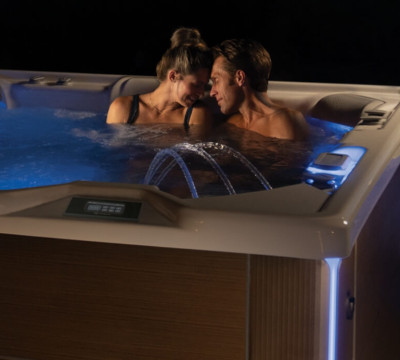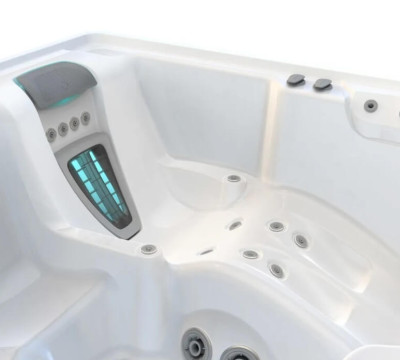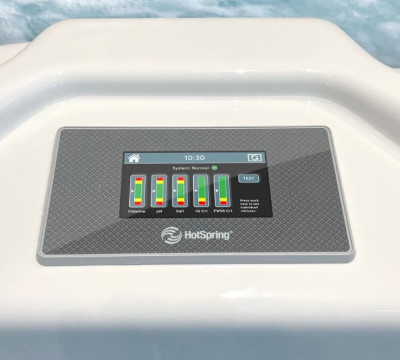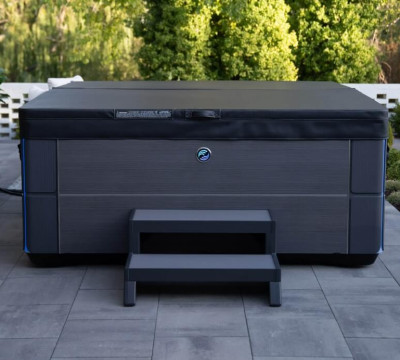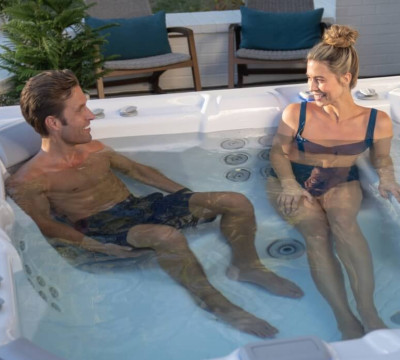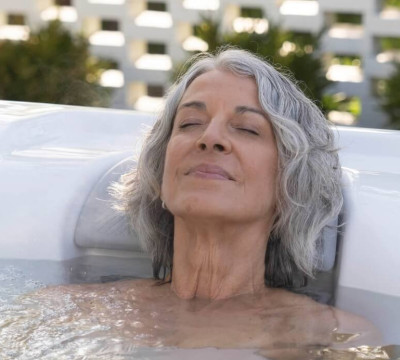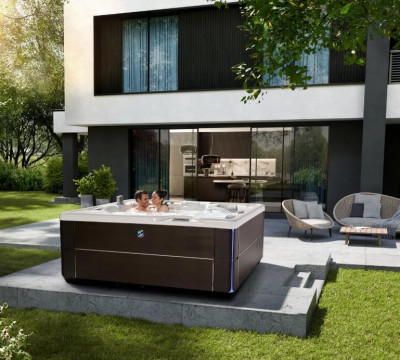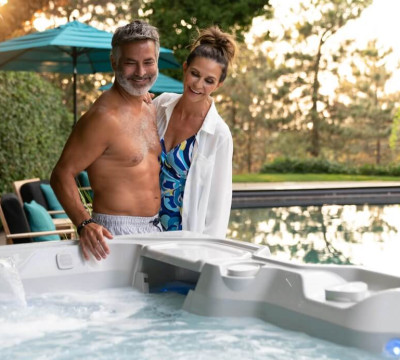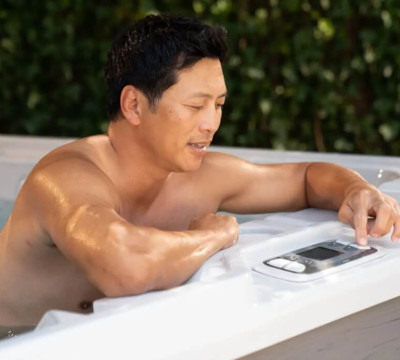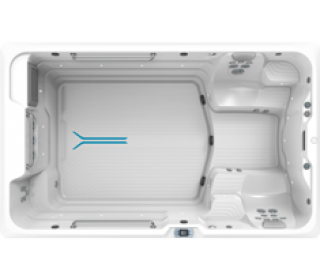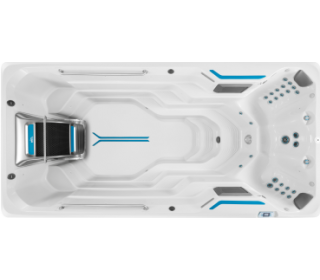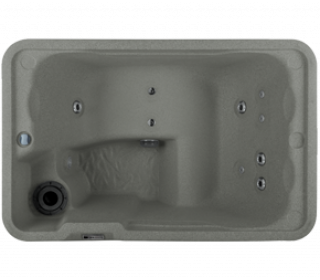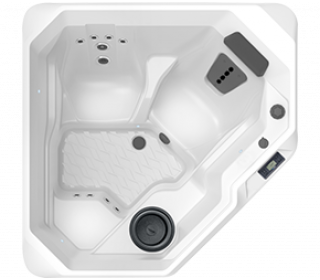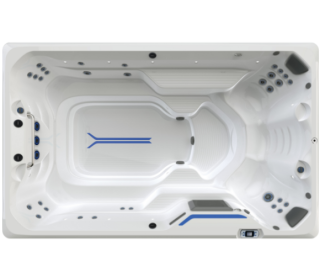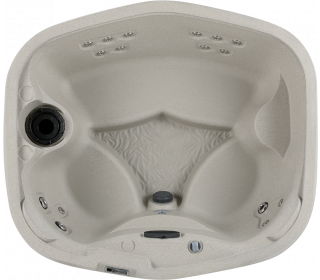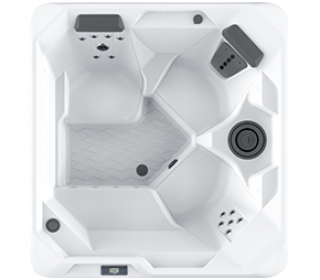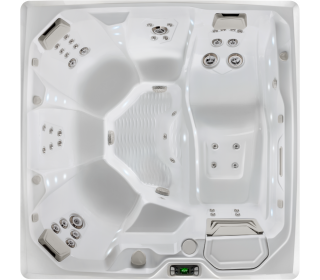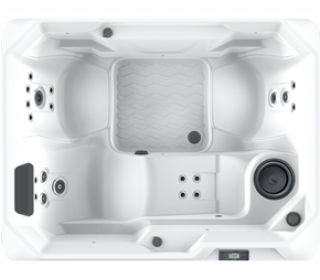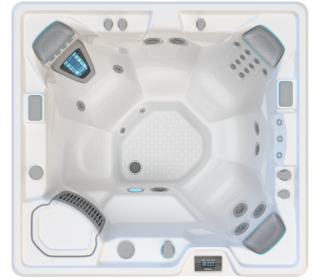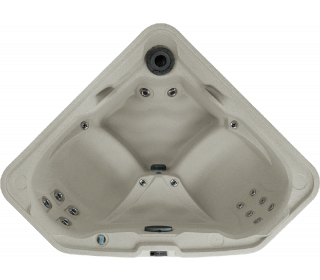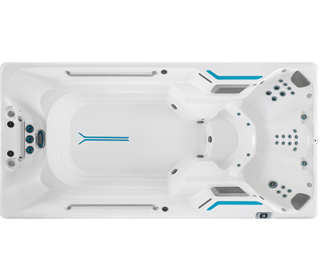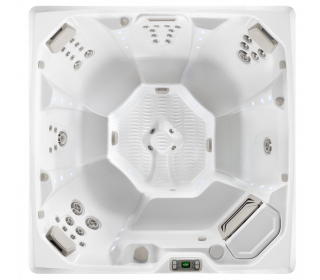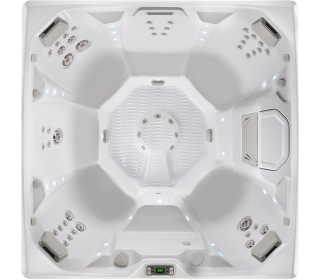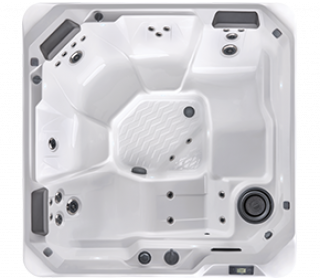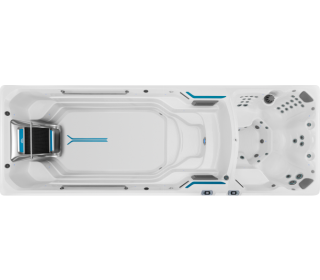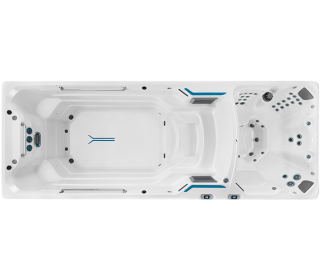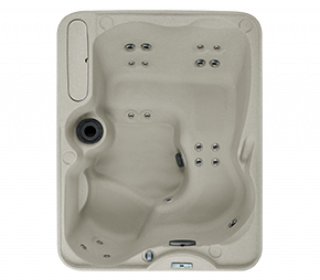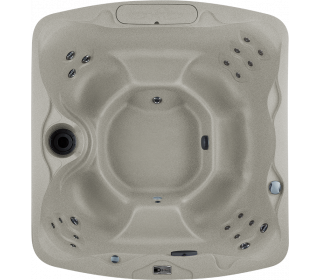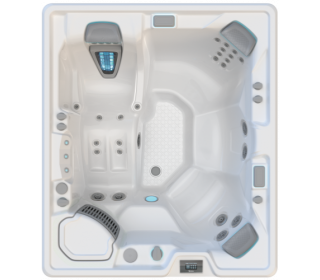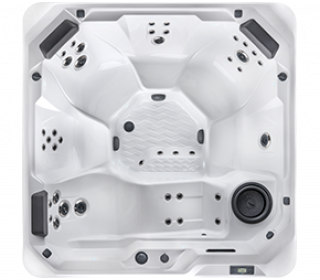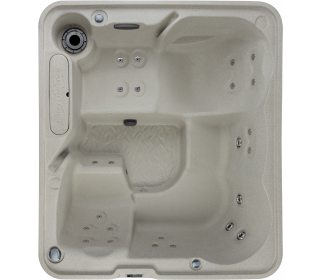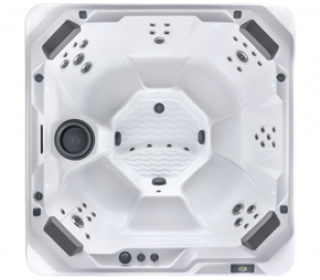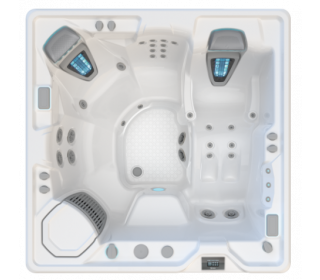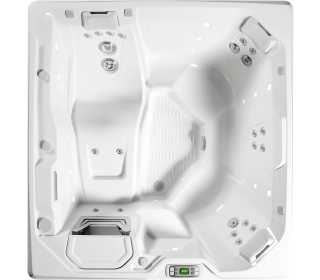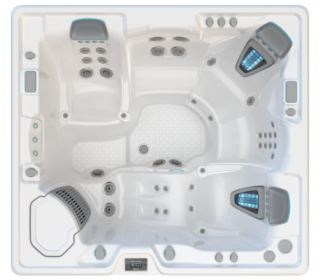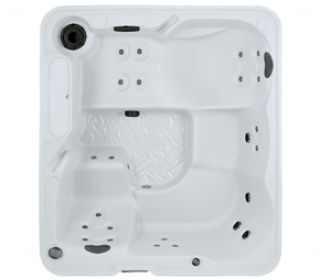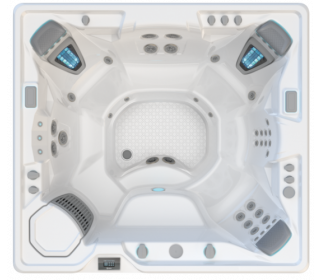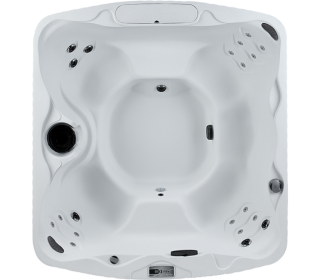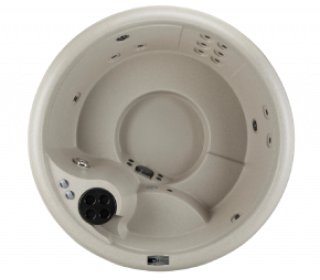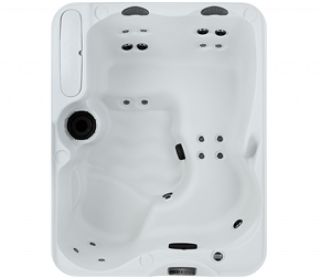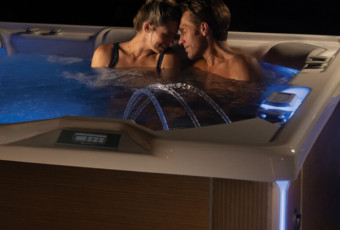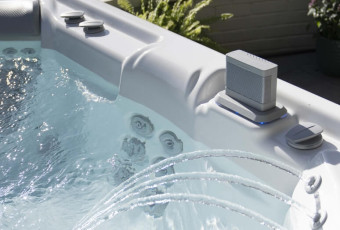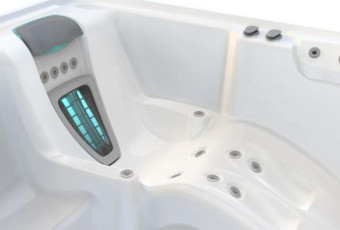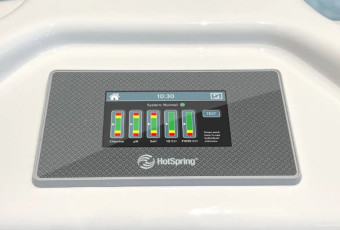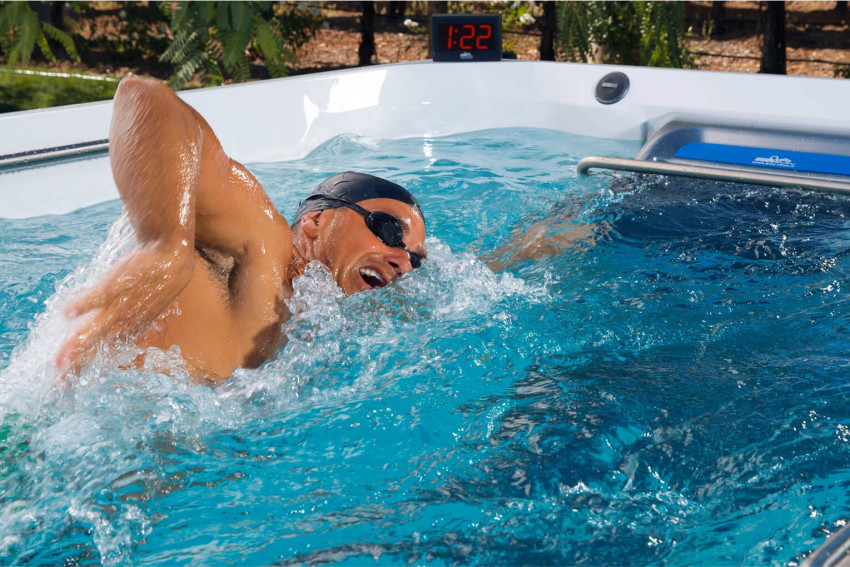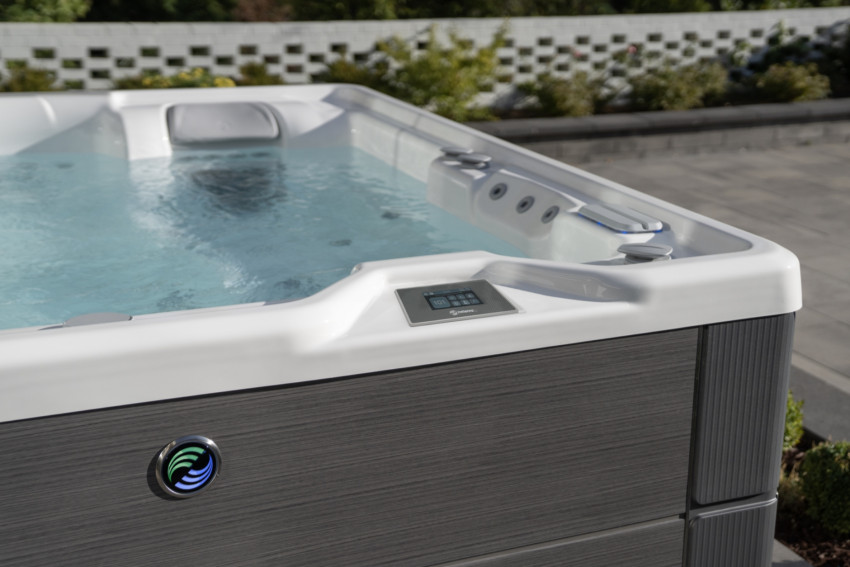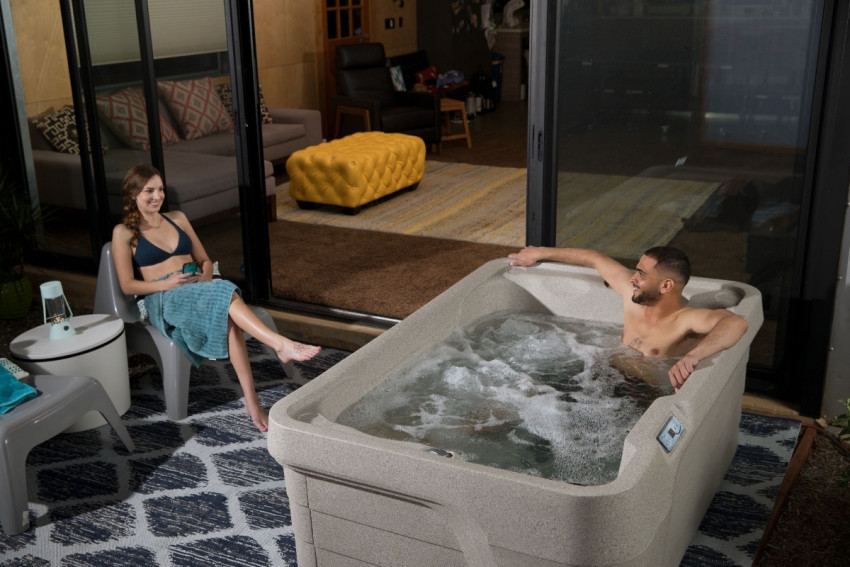The warmth of a spa pool’s water is what makes these machines so attractive, not least for the mental and physical health benefits that this warm water immersion offers. But at what temperature do you experience the greatest degree of benefit?
The best temperature for a spa pool is a matter of taste. Some people like a really hot spa, though for safety reasons most spa pools have a maximum temperature of 40C. The most popular temperature is around 37C, the same as the body. If you’re a new spa owner it’s wise to start low and go up, so set your spa to 35-36C and see how it feels.
But the best temperature for you will depend on a wealth of factors: the temperature that you find most comfortable, the healing effects that you hope to achieve through a soak, and the temperature of the day - after all, who wants to have a 40°C soak when it's already already 30°C outside?
Let’s take a deep dive into the considerations you should make when setting your spa pool temperature, and the ways in which warm water acts on your body.
What temperature should a spa pool be set at?
Humans have been enjoying the health benefits of warm water immersion – called ‘balneotherapy’ in the academic world – for millennia, from the Romans and their baths, to the Māori soaking in the thermal pools of Rotorua. More recently the healing powers of water have begun to be better understood by science.
When you step into a spa pool heated to 36-38°C, it’s almost as if you’re returning to the warmth and safety of the womb. This strange sensation triggers an instant physiological response, which in many ways we don’t yet fully understand. Your heart pumps greater volumes of blood while your blood vessels simultaneously expand.
The result: Greater blood flow means more oxygen and nutrients are delivered to soft tissues and vital organs, which in turn grants relief for a variety of mental and physical afflictions. Immersing in 36-38°C water may:
- Offer relief to sufferers of chronic pain
- Lower blood pressure and reduce the risk of heart attacks
- Reduce levels of anxiety
- Improve circulation and reduce inflammation
How do I manage my spa temperature?
Setting your best spa temperature should be simple in any spa pool, though it’s particularly quick and easy in a Hot Spring. No matter which model you choose, from the entry-level Freeflow range to the top of the line Highlife collection, you’ll enjoy an intuitive digital display that lets you set and precisely control the temperature in seconds.
The Highlife collection in particular grants you ultimate control over your temperature, as well as every other aspect of your soak. The wireless touch screen control panel works up to 10m from the spa, and allows you to adjust your water temperature down to a fraction of a degree.
The tricky bit is not setting your best spa temperature, but keeping it there, and doing so in the most energy-efficient way possible. The first step is to buy an energy efficient spa, but beyond that there are a few things that you can do to manage your spa temperature more effectively:
- Position your spa in an area that is protected from the elements.
- Consider placing your spa on a base plate to avoid losing heat to the cold ground below.
- Replace the cover whenever the spa is not in use.
Can you fill a spa pool with cold water?
It’s recommended that you simply fill your spa with the cool water that comes out of your garden hose, then let the heater do the work. If the water from your hose isn’t as cold as you want it to be, you can add ice to your spa pool to lower the starting temperature further.
What equipment can I use to help maintain the temperature of my spa?
Keeping your spa pool at the ideal temperature is far easier when you’re armed with the right equipment. There are a number of items that are particularly useful in retaining your best spa temperature, including:
- An efficient heater: The right heater will be powerful enough to quickly heat your spa, but not so powerful that it uses too much energy doing so.
- High-end insulation: No spa pool component is as critical for heat retention as insulation. Uninsulated or partially insulated spas are particularly inefficient, using a lot of power to keep the water warm. Choose your insulation wisely.
- A quality cover: Heat rises, and if you’re not careful it will rise right out of your spa. A cover will keep all that heat in, provided it is high quality, insulated and built for the spa it is fitted to, as you want a nice seal around the edges.
- A base plate: If your spa pool is positioned on particularly cold terrain, and lacks proper insulation, the cold can penetrate the base and cool the water. A base plate mitigates this issue, though if you choose a high-end spa, like a model from our Highlife collection, a built-in base plate ensures this won’t be an issue.
The CoolZone System: Perhaps you don’t want to retain heat so much as cold. Hot Spring spa pools fitted with the CoolZone System can drop the temperature of their water to a refreshing 15C, perfect for a hydromassage on a hot summer’s day.
Can I use my spa pool in summer?
All this talk of heat might make you wonder: are spa pools suitable for summer use? If it’s a hot day outside, a soak in a hot tub might be the last thing your body needs.
Nevertheless, you can certainly use your spa pool in summer, you should just ensure that the water is an appropriate temperature. You can either set the temperature down as low as 26°C – the minimum heated temperature on most Hot Spring models – or you can turn the heater off entirely and enjoy a refreshing spa in relatively cool water. There’s far more to a Hot Spring spa pool than its heating system.
Summer is a time for outdoor activity, and the soothing action of Hot Spring’s patented hydrotherapy jets is just the ticket for active summer muscles, whether to warm them up at the start of the day or cool them down at the end. These jets have been fashioned to offer therapeutic massage to specific muscle groups, and can be customised to your desired pressure. Speaking of pressure, Hot Spring jets deliver five times more than any other brand on the market, with the last jet every bit as powerful as the first.
Provided you’re enjoying this customisable hydromassage at a comfortable temperature, it hardly matters whether the heater is on or not!
What is the lowest temperature you can keep a spa pool?
When you set your spa to the lowest temperature, the the water in the tub will eventually match the temperature outside. Most spa pools can only heat the water and have no way to cool it, which means that the lowest temperature that most hot tubs can be kept at is whatever the outside temperature happens to be on that day.
Unless, that is, you choose a spa pool with cooling features.
The Hot Spring CoolZone system grants you the ability to actively cool your water, setting the temperature to as low as a truly refreshing 15C, which just happens to be the point at which the benefits of cold water immersion (CWI) therapy take effect.
The CoolZone system allows you to enjoy your spa pool all year round, from the peak of summer to the depths of winter, no matter what Mother Nature might throw at you!

Can you use a spa pool in the rain?
The short answer is yes – spa pools might be electronic pieces of equipment, but they’re designed for outdoor conditions and are built to deal with water, so there are no issues with using them in a drizzle (although you should always head inside if you see lightning).
There is a small asterisk, however: by allowing your spa pool to be topped up with fresh rainwater, you may change the careful balance of chemicals that keeps your spa pool water clean, clear, soft and fresh. The addition of rainwater can dilute chlorine and change pH levels, but only ever to a small degree, so these changes are simple to deal with as part of your standard water maintenance regime.
What temperature should a hot tub be set to in winter?
On the other side of the equation, what is the ideal winter temperature for a spa pool? The same guidelines as above still apply: first and foremost you want to set the spa to whatever temperature you find most comfortable, although that temperature should never exceed 40°C. If you’re hoping to gain the greatest degree of health and wellness benefits, from de-stressing to managing chronic pain, a temperature range of 36-38°C is considered the sweet spot.
By choosing a Hot Spring, you’ll enjoy a spa pool that is warm and ready whenever you are, be it in the heat of summer or the depths of winter. Hot Spring’s Energy Smart System means your spa pool heats itself quickly and efficiently to your desired temperature, which is set via a range of built-in digital displays. That heat is also retained thanks to market-leading insulation, significantly reducing power bills.
If you’re looking for a spa pool that can customise its experience to your specifications, look no further than a Hot Spring. Speak with our friendly team today to find out more!



